DK Landscaping in the Community
DK believes it is our duty and a privilege to be able to give back to our wonderful community.
Although we are a landscaping company, our true mission is to create a better community.
How Mulch Can Be Applied To Your Garden v1
One very useful and effective approach that gardeners can adopt to promote a healthy garden is mulching. This measure can be utilized in several areas including vegetable gardens and flower beds. The use of mulch can help to eliminate the presence of annoying weeds and helps soil to retain its moisture. Spend less time plucking up weeds, watering gardens and fighting pests when you use this technique.
Mulch For The Perfect Garden
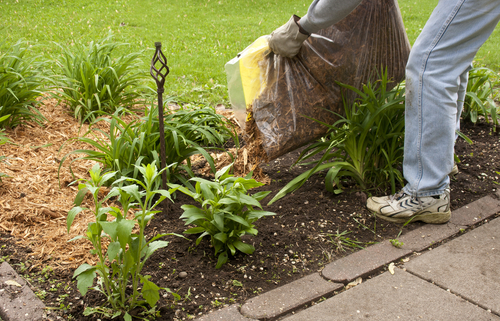
When mulching gardens there are two basic types of mulch that can be used and these are organic or inorganic. Organic mulches usually consist of several different,\ materials including chopped leaves, straw, grass clippings, wood chips,sawdust and shredded bark and inorganic mulches are mainly comprised of gravel, stones, black plastic, and geotextiles. Both types of mulch can be used to discourage weed growth and improve soil quality but organic mulches gradually improve soil as they decomposes while inorganic mulches don’t.
If people are applying mulch to combat weeds there are two important tips they should consider if it is to be done properly and effectively. The first would be to lay down mulch on soil that is already weeded and the second would be to lay it down thick enough to discourage new weeds from reappearing. The ideal thickness of mulch should range from around 4- 6 inches when laid even though a 2- 3 inch layer normally suffices in shady areas where weed growth is not as prevalent as it is in full sun.
Mulching is also an easy way to keep soil cool and moist in dry conditions and reduces the need to constantly water gardens. It provides protection to plants in harsh cold conditions preventing the freezing and thawing of the soil as the gradual decomposition of materials help to generate minimal heat.
Organic mulch has low nitrogen content and should fertilize soil first with a high-nitrogen product such as blood meal or fish meal to boost nitrogen levels in the soil before applying mulch. Another important thing that gardeners should take care to remember is to keep mulch about an inch away from crowns and stems. This is because wet mulch that rests against the stems of flowers and vegetables can cause them to rot. So be sure that mulch is at the appropriate distance to prevent this from occurring.
To protect and maintain the ideal conditions gardeners should definitely consider mulching as an option it is easy to apply, saves time and encourages a healthy, nurtured, environment throughout any garden. Contact us for more information.
Winter Plants – Part 2
During the winter season creatures prefer to hibernate and wait until nature affords them the opportunity to venture out into warmer conditions. There are no different to us humans as we seek to make our homes warm and comfortable during the dreaded winter weather. Your garden is certainly apart of your home and you should do all in your power to ensure it can handle winter’s fury and look its best. Vibrantly colored winter plants or even winter vegetables can enhance the life of a damp gloomy landscape.
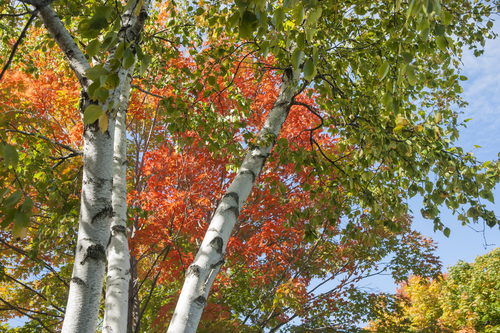
Know Your Winter Plants
An uncommon but very fascinating winter plant is Harry Lauder’s Walking Stick or Corkscrew Hazel. Even though, this shrub flowers in the spring season, it is a beautiful winter plant. This is due to its coiled and zigzagged branches. This plant tends to grow better in a fusion of bright sunlight and shade. The branches will need frequent trimming to preserve its attractive appearance however when they fall they can resemble an overgrown untidy mesh of wood.
The Paper Birch tree displays its gorgeous yellow leaves in autumn. However, when it gets extremely cold, its white bark provides a sensational difference to a backdrop of evergreens. Frequently they are used during the Christmas holidays in many gardens. The paper birch tree should be planted in deep holes with mulch to keep it damp. Partial sunlight will be essential for this plant.
The Heather plant is another suitable winter plant. It flourishes all year round and provides attractive flowers in summer and fall. It’s rich foliage provides a fascinating difference when compared to other winter plants. You should plant these in winter with mulch in an area that obtains excellent sunlight.
Holly has always been linked to winter and there are 400 assortments to select from ranging from small to gigantic trees up to 80 feet. There are various types of the holly plant to fit every garden and winter scenery. Its vibrant berries and dense foliage make it very eye-catching.
Hellebore is another winter plant that can be obtained in a fusion of selections. When flourishing it has a cup like shape and they come in an array of colors making it easy to find a color that best suits your winter garden. This plant flourishes better in total shade. Contact us for more information on how you can make create the perfect winter landscape.
Winter Plants – Part 1
Nature provides numerous varieties of winter plants that flourish in cold temperatures. There are winter plants that will flourish even in snowfall and there are others that can mirror their vibrant colors from the icicles hanging from your home.
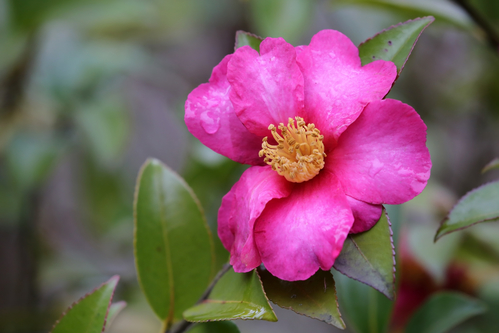
Winter Plants For A Breath Taking Scenery
One of the well-liked winter plants is the Camellia. This evergreen flourish from fall to early spring. With its brightly colored rose like flowers this plant provides a breathtaking difference to a sombre winter scenery. Camellia should be sowed in an area that have some sun but not too much
The winter-berry which is related to the holly and loses its leaves in fall is a great plant to have this time of year. You and your loved ones can enjoy the vibrant red berries that come into their own. The berries attract the birds during this time which is a sight to see and the birds will be happy for your blessings as well. You must plant the seeds during the fall in a small frame, then you can transplant them to fertile damp soil in the spring. However it is a slow growing winter plant, with its germination taking about 2 to 3 years.
Paper Maple has ringlets of copper colored bark flaking off all over and this constructs a pleasurable image both on the plant and while the leaves lay on the ground in all their splendor. During fall the green leaves change into a fascinating cinnamon shade and the plant grows in sunlight perfectly.
Red Twig Dogwood is an old-time golden boy as the color of the plant is sustained all year round. The boldness of the plant’s color relies on the sunlight it obtains. This is another incredible addition to consider in your garden during winter.
Firethorn is lasting and it has an appealing view all year. It has little bunches of glistening white flowers in spring and vibrant shiny green leaves the rest of the year. The little pea like berries can be either orange or yellow in color and these can survive until long after fall is over. The seeds should be sowed in the fall in a cold frame then transplanted to properly drained fertile earth in the spring.
If you want the best in lawn maintenance and advice contact us as DK landscaping. Our team of experts will help you give your garden the nutrients and the proper care it needs to survive and remain lush.
Winter Services for Property and Landscape Maintenance
The cold temperatures and dry air can prove to be quite the burden on your lawn and landscaping. Property owners can preserve the integrity of their lawn and landscaping by reaching out to our lawn and landscape maintenance professionals for expert treatment. Ally with DK Landscaping and we will make sure your property maintains its beauty throughout the winter, spring, summer and fall.
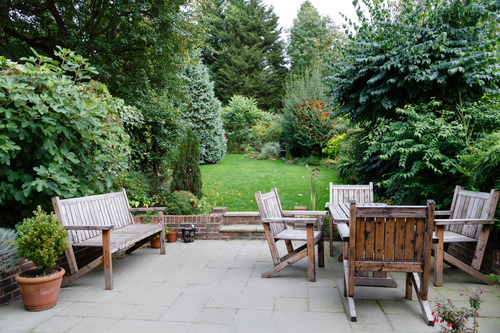
Winter Lawns and Landscaping Maintenance
Your front and back lawns are not a lost cause during the winter months. Though the frigid temperatures will take a toll on all forms of life, it is certainly possible to maintain a lovely lawn, shrubs, flowers, trees and other greenery during the coldest portion of the year.
DK Landscaping knows exactly how to treat lawns during the winter. We make use of a unique winter fertilizer that keeps lawns looking fantastic even when the temperatures dip down toward the freezing mark. Our special fertilizer enhances grass so it does not require an abundance of water. It also stimulate robust root development that ultimately preserves the integrity of your grass across the years to come. This fertilizer even bolsters your lawn’s ability to combat disease and withstand heavy foot traffic.
Ally with DK Landscaping for winter lawn and landscaping maintenance and you will notice a considerable difference in your property’s beauty. We know exactly which trees, shrubs and flowers should be pruned during the winter months. Furthermore, our team understands the extent to which each type of shrub and flower should be pruned.
As an example, we prune certain roses back by upwards of 80 percent during the winter months. Certain types of grass such as ornamental grasses require 90 percent pruning during the coldest months of the year. This is the type of attention to detail that separates your lawn’s health and beauty from the pack. Put your faith in DK Landscaping to sweat the small stuff and you will enjoy the benefits in the form of glorious lawn and landscaping that holds its beauty far into the future.
Water Preservation
The winter months can be brutally dry. You might be tempted to water your grass, trees, flowers and shrubs quite frequently during this time of the year. Yet you don’t want to run up an expensive water bill or spend your limited free time outdoors in the bone chilling cold with a hose in your hands! Your best course of action is to turn to the irrigation experts at DK Landscaping.
We know all the best methods to disperse water in a highly efficient manner. We also perform water saving landscape design known as “xeriscape“. Homeowners and commercial property owners can both benefit from the efficient distribution of water across lawn and landscaping. Our goal is to conserve water, save you plenty of money and keep your lawn in tip-top shape.
In addition to water saving landscape design techniques, we also make use of native plants acclimated to the dry air, runoff prevention methods, drip irrigation, MP rotators and smart evapotranspiration timers. The end result is a stunning lawn and landscaping that requires substantially less water than previously needed.
Ask any of our current or former customers about our water conservation design methods and equipment and they will testify to the legitimacy of these strategies.
Let our landscape maintenance experts take a look at your property and we’ll start brainstorming ways to boost its aesthetic. Whether you are looking for a beautifully green lawn or elegant landscaping, DK Landscaping can make it happen. Reach out to us to schedule an initial consultation.
Winter Gardening: Growing Vegetables
Though snow may lie deep in drifts outside your window, this is the ideal time to get started with this year’s winter gardening program. There are many garden tasks that can be done now, while there is ample time to plan, research, and begin gathering materials. Some gardeners consider these winter chores to be the most enjoyable parts of gardening. Tasks can be accomplished comfortably from your armchair as the garden takes shape in your imagination, where it is always lush, abundant, and of course free of weeds.
Winter Gardening Advice
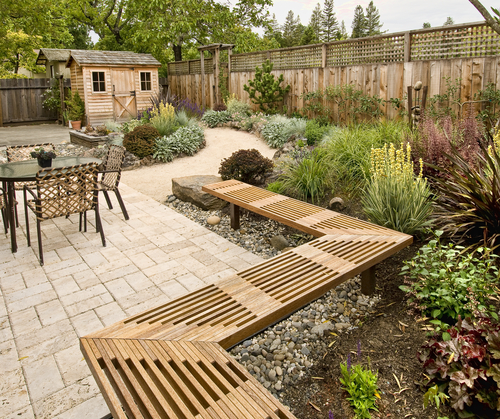
In midwinter, before the growing season gets underway you have time to organize yourself so you can accomplish everything you need to do from now until your garden is planted. This is the time to make rough plans which can be refined and modified as you go along. So while the birds twitter around their feeders and the forecast is for more snow, grab a stack of seed catalogs, some paper, and a pencil, and settle into a comfortable chair and plan your dream garden.
It is helpful at this early stage to make some key decisions about your garden. You need to compile the list of vegetables that you plan to grow. You must also decide which vegetables you will start from seed inside, which you’ll sow as seed directly into your garden, and which you’ll purchase as seedlings from a nursery. Additionally, you should list supplies you’ll need for cowing seedlings indoors, and begin to gather these items. It is also helpful to start composing a rough sketch of your garden layout. Finally, you should draw up a calendar of garden tasks to do to help you stay on schedule as the season progresses.
Start by thinking about which vegetables you’d like to grow this year. If you’ve had a vegetable garden before you should consider what grew well for you before and what failed. Certainly include any of your old favorites, those vegetables that are easy to grow and can be relied upon to produce abundantly. There may be new vegetables you’d like to try or new varieties of your old favorites that you would like to experiment with. Consider quantity too. Did you have as much as you wanted of everything last year? Was there something that you could not give away fast enough such as all those zucchinis? Perhaps there was something which you enjoyed eating but took up too much space?
If you haven’t grown vegetables before, a good way to start putting a list together is simply to consider what your family enjoys eating. You’ll want to think about vegetables that you’d like to provide fresh from your garden over the summer, as well as considering any vegetables that you’d like to can, freeze, or store for fall and winter eating. If this is your first vegetable garden it’s wise to start small. A small kitchen garden of ten or twenty square feet planted with a handful of vegetables and herbs will keep you fairly busy with garden tasks, supplement your family’s food, and provide you with good gardening experience to go forward.
Don’t forget to take your growing zone into consideration when choosing vegetables to grow. If you are not sure which zone you live in, you can readily find out in almost any gardening book or online. Do some research on gardening in your region to find out how long your growing season is, when planting time starts, and what types of vegetables do best where you live. Contact us for more information.
Lawn Care In the Fall
Lawn care is necessary if you are to keep your garden looking its best. At the end of a busy and fun filled summer, your lawn may begin to demonstrate symptoms of wear and tear. Early autumn is an excellent time to maintain the damage and make sure that your lawn would be in good fettle for the upcoming year.
Lawn Care Guidelines
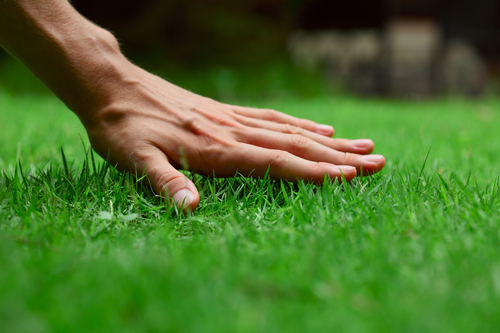
Before raking debris, you should kill any moss with a lawn moss herbicide. For larger lawns, you can use a motorized scarifier. Ensure that you use a spring-tined rake. Scraping your lawn enhances its look and adds vigor to the lawn. Establish air channels in dense turf by placing a border fork in the soil. This action will draw plugs out of the soil.
After scraping and aerating your turf, fill the holes with a top dressing. You can purchase your top dressing from garden or hardware stores. It is such an affordable and simple technique that you can also make your own top dressing.
After all the fun times and frequent use during the summer, your lawn may exhibit signs of degeneration. Therefore, early autumn is a superb time to maintain any devastation. Make sure that your lawn is in excellent health for next year.
With the use of gloves, put some granular autumn fertilizer evenly over noticeable squares. If no rain falls within three days of applying the fertilizer, then wet it. In the initial stage of autumn, your soil would be warm enough and damp to plant grass seed. Additionally, scatter seed to correspond with your type of turf. Apply this at half of the suggested rate for contemporary turfs. This helps to enhance any depilated spots.
If you want to improve on the way you take care of your lawn then contact DK Landscaping. We are the experts in plant and lawn care. We can help you create the right conditions for a healthy and much improved lawn and garden.
Winter Landscaping – Its Actually Great For Your Lawn
During the latter time of the year, when the winter months begin to creep in, the outdoors transition into a dull and inhospitable place. All the activity then shifts to the indoors, however, for garden and lawn lovers alike, this is the ideal time to prep your lawns and gardens for the upcoming growing season. These are five easy tips you can consider, to keep your gardens and lawns in good shape during winter. Improve your winter landscaping techniques today!
Winter Landscaping Tips
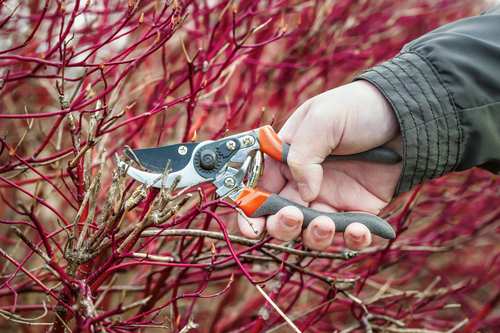
Pruning and trimming is a popular garden practice. This helps to shape, improve and maintain the general health of plants and trees. During the dormant, winter months carrying out these practices, tend to be fairly, popular and is encouraged,as during this time of dormancy, the vast majority of hedges, shrubs and trees, including evergreens and deciduous trees, can be pruned or trimmed, without causing damage to the plant or tree.
Heavy snowfall and high winds, usually come with the seasonal winter storms.Therefore it is recommended, that prior to this time, all high or decayed branches, be pruned or entirely removed. If or when stormy conditions occur, these decayed branches or dead trees can quickly transform into falling hazards, that pose serious threats of injury. With that said, not everyone may be confident enough to carry out pruning or trimming effectively. So we recommend, consulting a local, insured, tree removal service, who will handle all your trimming and pruning needs in a safe, professional and effective manner.
During the fall, leading into winter leaves are constantly falling, covering your garden or lawn from end to end with immense amounts of leaves. Cleaning and maintaining your lawns or gardens at this time, certainly proves to be a daunting task but is also very important. This practice allows your garden beds and lawns, to receive the adequate amounts of sunlight required, for the optimal growth of plants as well as lush healthy lawns.
Another resourceful and efficient tip one can utilize in effort to prep your garden for the upcoming growing season, is getting a head start planting your garden beds. One can begin by pruning all shrubs, trees and perennials.Secondly, clear and remove all leaves and other debris from beds. Afterward, define the edges of beds by hard edging and creating a perimeter pass along the edge, with a lawn mower. Once these steps are completed you can then begin to install your bulbs for spring.
Protecting plants from any damage or destruction, has always been a major concern for most gardeners,with the harsh,winter weather being no exception. A clever tip that has proven effective, to equip gardeners for this extreme period, is the use of mulch. Mulch is used to retain soil moisture, regulate soil temperature, suppress weed growth, serves as an aesthetic and most importantly, acts as a shield against the unfavourable, winter, conditions. Planting beds should be mulched at a depth of 1.5 – 2 inches, to ensure plant roots remain the right temperature as well as to offer the right amount of protection from any potential damage.
Ensuring that you maintain a safe and nurturing environment throughout your garden, should be a priority of every gardener, especially throughout the winter season. This would include tying up loose branches of evergreens and boxwoods,turning off and covering all water spigots, storing away any remaining, organic, chemicals and making sure that irrigation systems are properly winterized. With that said, please remember not to use a broom or shovel while removing snow from branches as they will be frozen, fragile and could easily sustain damage. If in doubt this winter season contact DK Landscaping for more information.
How to Grow Boxwood Shrubs
Boxwood is an evergreen plant that grows in small, dense hedges. It doesn’t flower noticeably, but its rich green color makes it good for foliage cover. They work well for borders or near entryways. However, it’s a slow-growing plant, so don’t expect it to be impressive overnight.
A Few Boxwood Facts
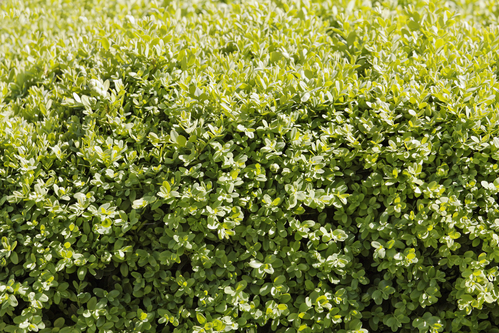
As with all plants, be sure you’re placing your boxwood shrubs well. Boxwood typically does best in partial or full sun, so don’t plant it on the shady side of a house. Boxwood shrubs prefer well-drained soil, although it’s not very picky about pH. In very hot climates, try to plant your shrubs so they’ll receive some shade during the heat of the day, and do your best to water them semi-regularly so they don’t wilt. Try to remember your climate will impact the health of your boxwood.
Boxwood is generally hardy, but it has a few pests to watch out for. The most notable is the boxwood leaf miner, which causes the leaves to turn yellow. You can spray the leaves with insecticide to kill the plant, or try for an organic option such as neem oil.
You may also notice phytophthora root rot, a fungal infection. The fungus kills the roots, so the plant has a harder time taking in moisture and nutrients, and eventually begins to die back. To prevent this, make sure you’re not overwatering your boxwood shrubs, and ensure the soil is draining well.
Winter bronzing is a phenomenon where a boxwood’s leaves turn orange in the cold. This isn’t fatal to the plant, but many gardeners find it unpleasant to have. Winter bronzing is often caused by wind exposure.
To avoid winter bronzing, try to plant your boxwood shrubs such that they’re sheltered from freezing winter winds. If your ground isn’t frozen, give your shrubs a deep watering, especially if you live in a region with dry winters. You may also consider using a slow-release fertilizer in spring and fall. If your boxwoods are still bronzing, try spraying the leaves with an anti-desiccant, to keep their moisture in.
Though it takes dedication to reach its full potential, boxwood is a beautiful foliage plant that’s a staple of many gardens. If you plan to install boxwood shrubs around your home, get in touch with us and we’ll walk you through the process. Contact us at DK Landscaping for more gardening tips and advice.
Time To Mulch
There are various kinds of organic mulches used in garden maintenance. They act as fertilizers giving your soil the nutrients and conditions needed for sustainable growth. The State of California has policies in place that govern the production of mulch. Take a look at the various kinds of mulches that are highly recommended:
Types Of Mulches
Newspaper is becoming more widespread as mulch. Shredded newspaper has been used to maintain a damp environment for plants during shipping. This technique has been used on land as well. The way this all works is because layers of newspaper have excellent water retaining capabilities. They also help to control weeds and manage soil temperatures. This is an excellent benefit.
Shredded Leaves can be utilized as mulch any and everywhere in your garden. This is one of the most natural forms of mulch. Many gardens have flourished by using this technique.
Grass Clippings is used in the isolated areas of your garden where you want to restrain weeds. Grass clippings also are prone to mass down the water causing it not to pass through.
As part of your gardening maintenance plan you should utilize a mulching mower and leave back the clippings on the lawn to supply added fertility to your soil. Nonetheless, if you place your grass clippings in bags do not discard of them, unless you have utilized weed killer or some other pesticide on your lawn. You should also know that synthetic lawn care items can be harmful to some flowers, so you may not want to use them in your garden. Grass clippings that are not treated should be placed in your compost bin or utilize as mulch for open areas are not yet planted.
Some gardeners hate to see leaves in their garden, and that’s a fact. Leaves really aren’t suitable for a formal garden. But if you cover your garden with the leaf mulch it tend to fusion into the garden in no time. This way you can still have the beauty of your garden untarnished while giving it the advantages of having mulch added.
During rainy times, unshredded leaves may mass together and fight off the water. If the leaves are too wet to shred, they can still be used. If you are considering implementing this gardening improvement technique then seek an expert gardening service. Contact us the gardening experts for more sound advice and gardening maintenance.
How to Transplant Shrubs in Summer
The best times of year to transplant trees and shrubs are spring and fall; however, certain situations may make it necessary to move your plants outside of those seasons. For example, you may want to take your shrubs with you if you are moving or you may have to move the plant because of the weather.
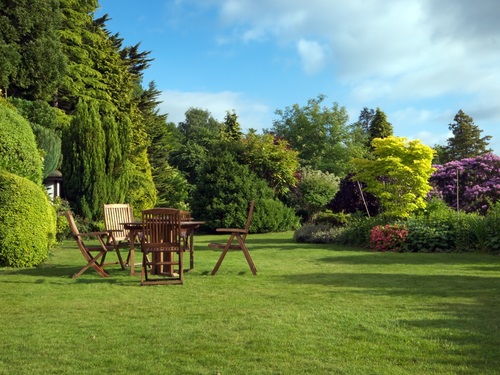
If you find it necessary to move a plant during the warmest part of the year, you will need to take certain steps to ensure its health. Here are some tips on how to move shrubs in the summer without harming them:
- Choose the Right Location
Transplantation represents a dramatic change and a plant will have to adapt to its new environment slowly in order to survive. This means that you will have to keep factors like sunlight, soil drainage and soil pH in mind when choosing a new location. - Dig an Appropriate Hole
You will need to dig a hole that is approximately twice as large as the shrub’s root system. The additional space allows the roots to grow into the new site comfortably. - Carefully Remove the Shrub
Work carefully to avoid damaging the root system when uprooting shrubs. You will want to take as much of it as you can. You will also want to move some of the soil from the old location to the new one. You can place larger shrubs on a tarp and drag them to the new location along with some of the soil. - Add Adequate Water to the New Hole
You will want to wet the hole thoroughly before placing the shrub into it but avoid oversaturating it as this can cause the shrub’s roots to rot. - Place Shrub in the New Hole
Along with the shrub, place some of the soil from the old location into the hole as well as some potting soil. Pat the soil down around the base to ensure that the shrub stays upright. You can add watering stakes to the ground so that the shrub can water at root level but this is not essential. Be careful to avoid damage to the roots when installing the watering stakes.
The quality of your landscaping plays a major role in your ability to enjoy your yard and in your property value. If you need help with moving shrubs or with any other aspect of landscape maintenance, contact us today. Our experienced landscaping crews know how to move your shrubs and trees quickly and without damaging them.





